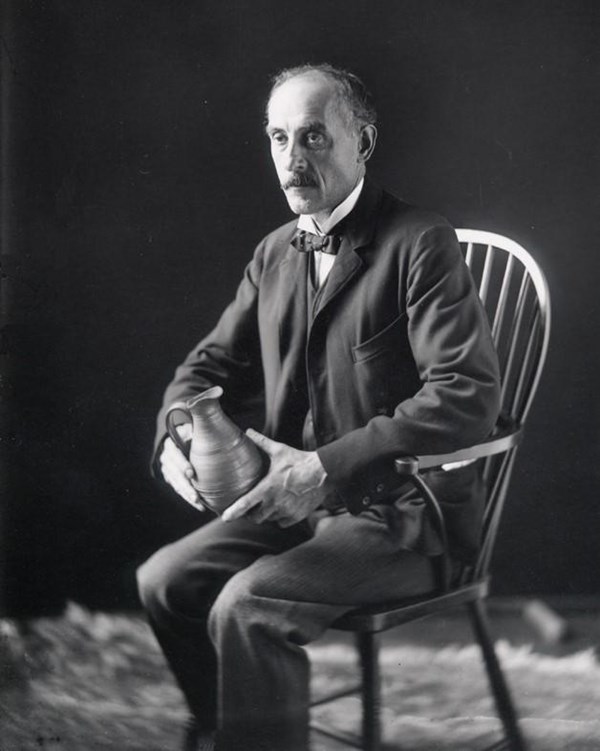Notes on Irish-American Sculptor Louis St. Gaudens, Creator of the Marble Twin Lions at Boston Public Library
Portrait of Louis St. Gaudens, photo courtesy of Saint Gaudens National Historical Park
Louis St. Gaudens (1854-1913), whose iconic sculptures grace the American landscape today, was born in New York City on January 8, 1854. He was the son of Bernard Saint-Gaudens from France and Mary McGuinness from Ireland, and the brother and protégé of his older brother Augustus, considered the preeminent American sculptor of his generation.
The family had emigrated from Dublin to Boston in September 1848, fleeing the Irish Famine. They stayed in Boston for about six months before moving to New York City, where they settled.
Among the most revered works of Louis are the twin lion statues in the foyer of the Boston Public Library; a statue of Greek poet Homer in the Main Reading Room Rotunda of the Library of Congress; six allegorical figures encircling Union Station in Washington, DC, and 46 Roman legionnaire statues inside the station.
Louis was schooled in the art of sculpture at the French Academy and Ecoles de Beaux Art in Paris, but he learned mainly from his older brother, who he had followed to France in the 1870s.
Among the most revered works of Louis are the twin lion statues in the foyer of the Boston Public Library; a statue of Greek poet Homer in the Main Reading Room Rotunda of the Library of Congress; six allegorical figures encircling Union Station in Washington, DC, and 46 Roman legionnaire statues inside the station.
Louis was schooled in the art of sculpture at the French Academy and Ecoles de Beaux Art in Paris, but he learned mainly from his older brother, who he had followed to France in the 1870s.
Louis assisted Augustus on many famous pieces, including the Colonel Shaw Memorial in Boston, The Charles S. Parnell Monument in Dublin and the General Sherman Monument in New York City, according to the Boston Evening Transcript, who noted that Louis was able to “interpret more clearly his brother’s ideas in both clay and marble. As a worker in marble, he had few equals.”
Twin Lions, photo courtesy of Boston Public Library
A lions at Boston Public Library, photo courtesy of Michael Quinlin
Locally, Louis’ most iconic work is the widely-viewed public Twin Lions Monument to two Massachusetts Volunteer Infantry regiments - the Second and the Twentieth - which fought bravely in the Civil War. The lions are located in the foyer of the Boston Public Library in Copley Square. Although St. Gaudens intended to polish the Siena marble before the memorial was unveiled, the regiment members who commissioned the work were so delighted with the unpolished, raw look of the statues, that they asked the artist to leave it as is.
Union Station, photo courtesy of John Canning Preservationist
Photo courtesy of Library of Congress, photo by Carol Highsmith
St. Gaudens also created the statue of Homer in the Main Reading Room at the Library of Congress Thomas Jefferson Building in Washington DC.During his life, Louis adopted the spelling of St. Gaudens to differentiate himself from his more famous brother Augustus Saint Gaudens. Louis died on March 9 in Cornish, NH from pneumonia.
The twin lions, along with other sculptures, rare books and other material at the Boston Public Library, is featured on Boston’s Irish Heritage Trail.
Research + text, Michael Quinlin








Comments
Post a Comment